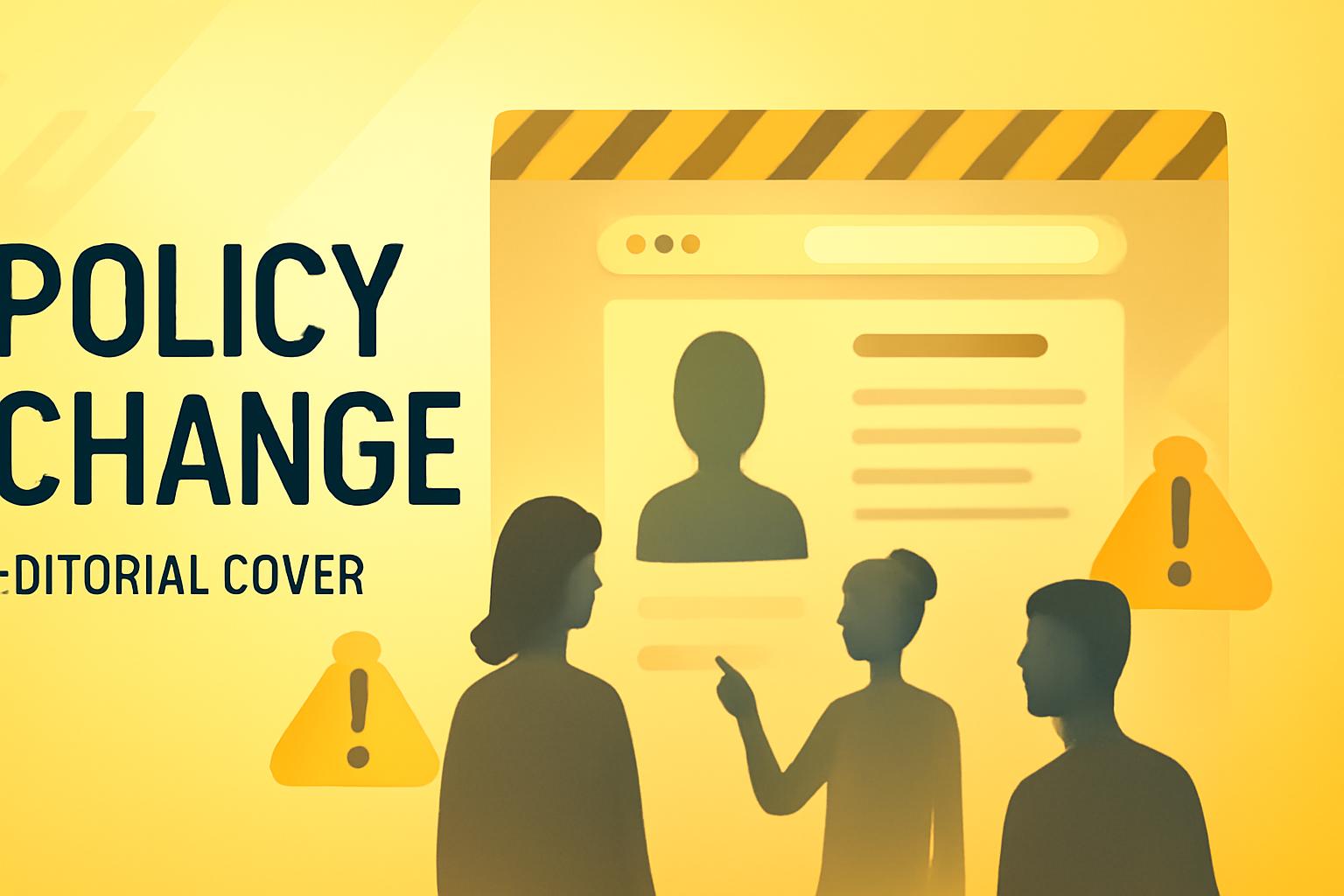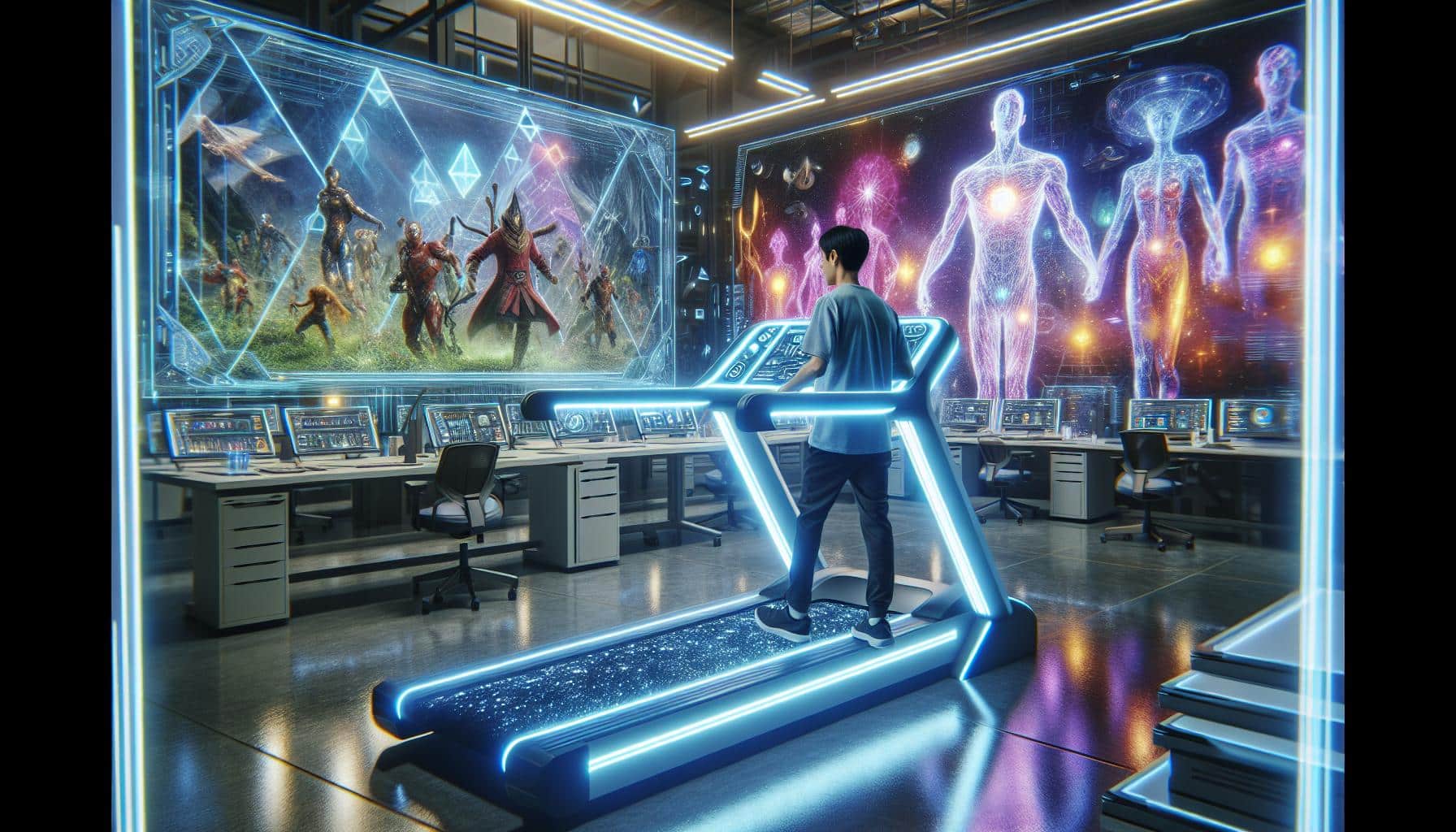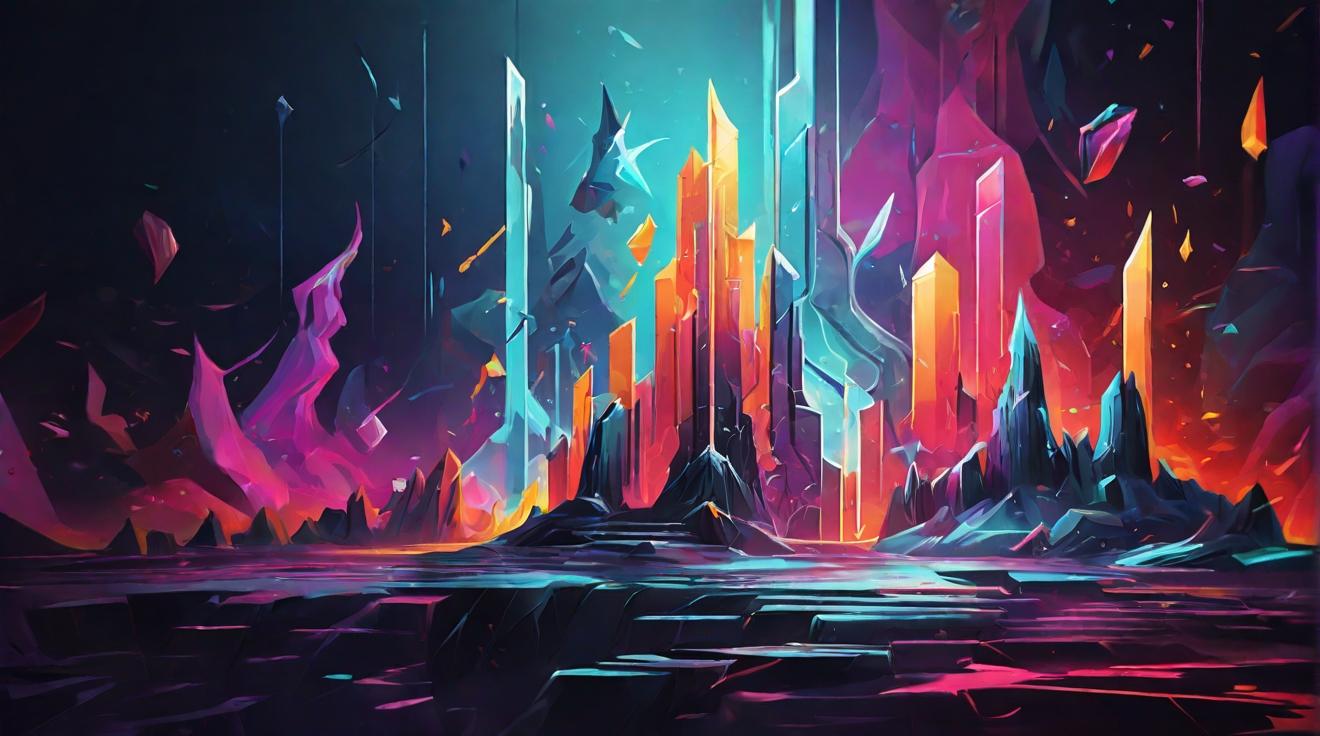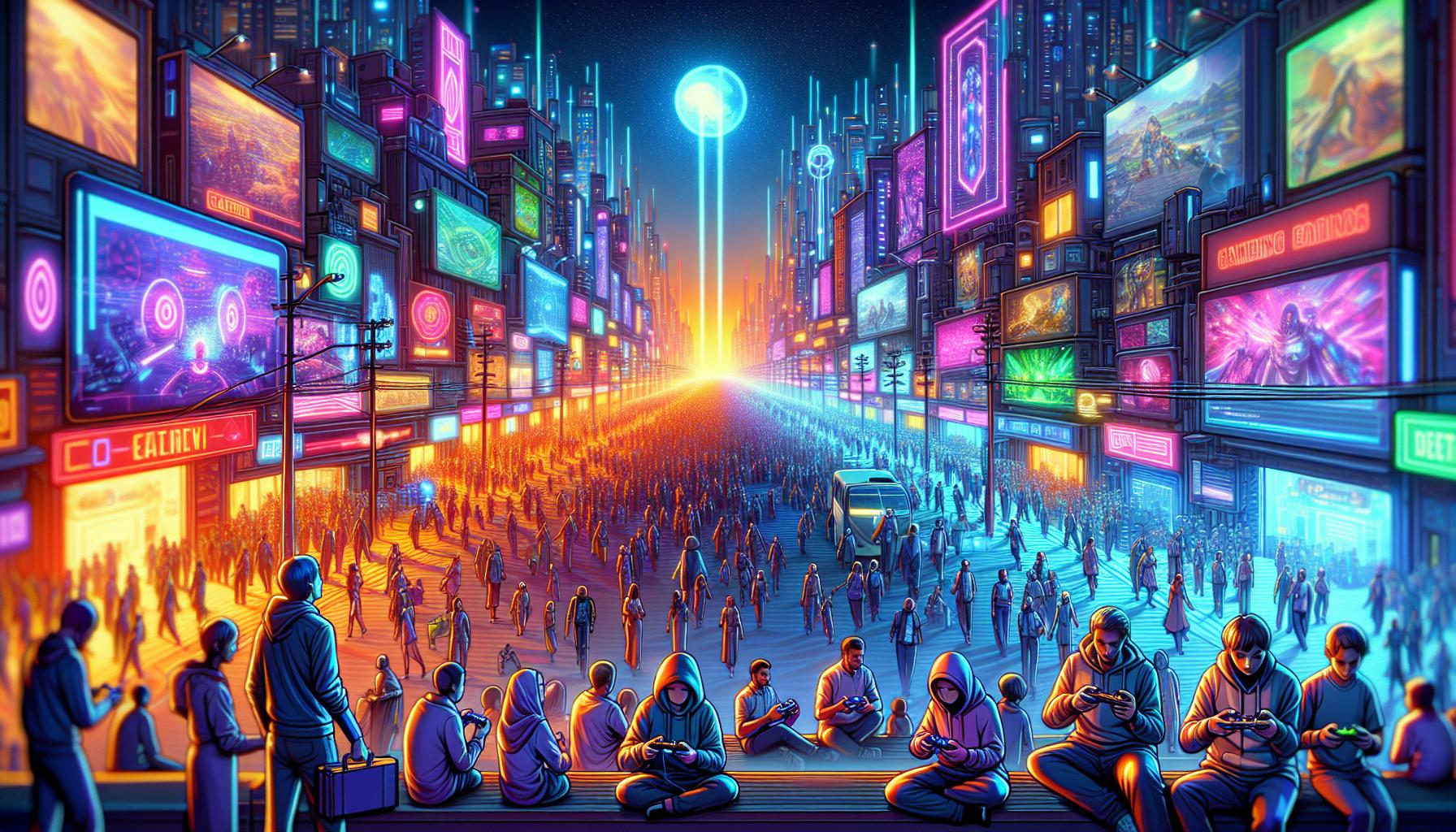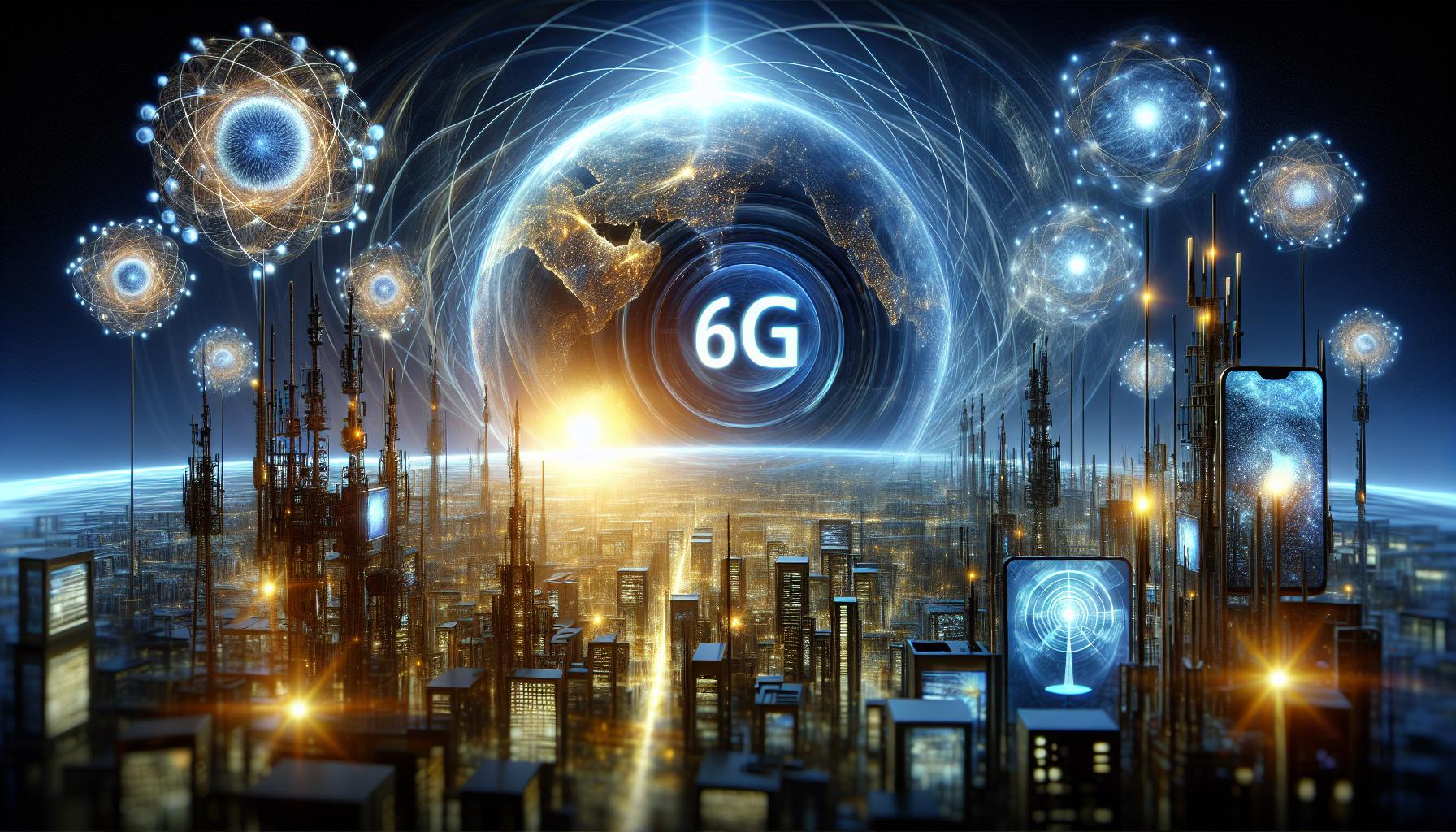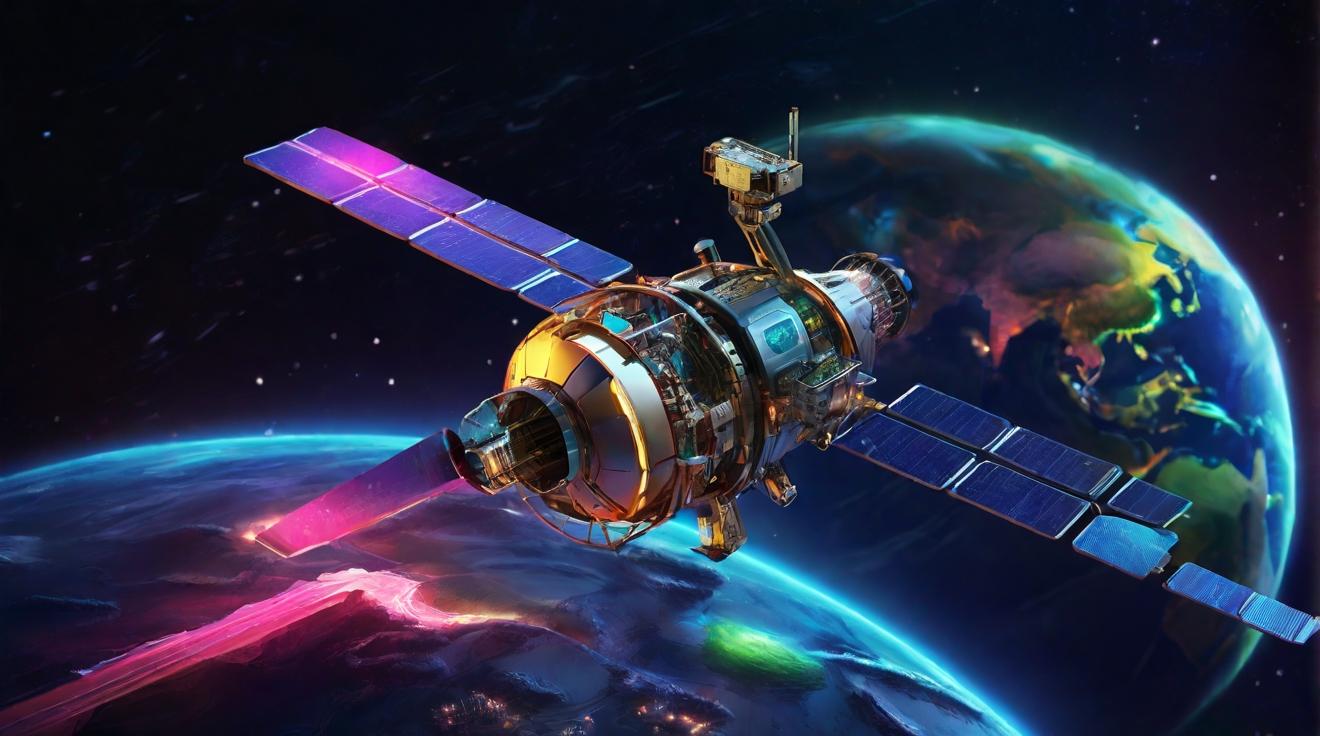YouTube’s pilot program to reinstate previously terminated creators marks a strategic recalibration in its content moderation policies. By allowing certain creators back onto the platform, particularly those removed under now-defunct COVID-19 and election integrity rules, YouTube aims to address political pressures while maintaining community standards. !-- wp:paragraph -->
Contents
FinOracleAI — Market ViewFinOracleAI — Market ViewIndustry and Community ReactionsFinOracleAI — Market ViewIndustry and Community ReactionsFinOracleAI — Market ViewIndustry and Community ReactionsFinOracleAI — Market ViewEligibility and Evaluation Criteria for ReinstatementIndustry and Community ReactionsFinOracleAI — Market ViewEligibility and Evaluation Criteria for ReinstatementIndustry and Community ReactionsFinOracleAI — Market ViewHistorical Policies on COVID-19 and Election IntegrityEligibility and Evaluation Criteria for ReinstatementIndustry and Community ReactionsFinOracleAI — Market ViewHistorical Policies on COVID-19 and Election IntegrityEligibility and Evaluation Criteria for ReinstatementIndustry and Community ReactionsFinOracleAI — Market ViewBackground and Political Context Behind the Policy ChangeHistorical Policies on COVID-19 and Election IntegrityEligibility and Evaluation Criteria for ReinstatementIndustry and Community ReactionsFinOracleAI — Market ViewBackground and Political Context Behind the Policy ChangeHistorical Policies on COVID-19 and Election IntegrityEligibility and Evaluation Criteria for ReinstatementIndustry and Community ReactionsFinOracleAI — Market ViewYouTube Introduces Pilot Program for Reinstating Terminated CreatorsBackground and Political Context Behind the Policy ChangeHistorical Policies on COVID-19 and Election IntegrityEligibility and Evaluation Criteria for ReinstatementIndustry and Community ReactionsFinOracleAI — Market View
- Opportunities: Regain trust from disenfranchised creators and audiences, enhance platform diversity, and demonstrate responsiveness to political and public scrutiny.
- Risks: Potential resurgence of controversial or harmful content, challenges in monitoring reinstated creators, and possible backlash from communities affected by prior violations.
- Long-term implications for content moderation policies and platform governance remain to be observed.
FinOracleAI — Market View
YouTube’s pilot program to reinstate previously terminated creators marks a strategic recalibration in its content moderation policies. By allowing certain creators back onto the platform, particularly those removed under now-defunct COVID-19 and election integrity rules, YouTube aims to address political pressures while maintaining community standards. !-- wp:paragraph -->- Opportunities: Regain trust from disenfranchised creators and audiences, enhance platform diversity, and demonstrate responsiveness to political and public scrutiny.
- Risks: Potential resurgence of controversial or harmful content, challenges in monitoring reinstated creators, and possible backlash from communities affected by prior violations.
- Long-term implications for content moderation policies and platform governance remain to be observed.
FinOracleAI — Market View
YouTube’s pilot program to reinstate previously terminated creators marks a strategic recalibration in its content moderation policies. By allowing certain creators back onto the platform, particularly those removed under now-defunct COVID-19 and election integrity rules, YouTube aims to address political pressures while maintaining community standards. !-- wp:paragraph -->- Opportunities: Regain trust from disenfranchised creators and audiences, enhance platform diversity, and demonstrate responsiveness to political and public scrutiny.
- Risks: Potential resurgence of controversial or harmful content, challenges in monitoring reinstated creators, and possible backlash from communities affected by prior violations.
- Long-term implications for content moderation policies and platform governance remain to be observed.
Industry and Community Reactions
This policy shift has been met with cautious optimism from creators and commentators who view it as a step toward balancing free expression with responsible content moderation. !-- wp:paragraph --> However, some critics remain concerned about the potential for harmful content to resurface and the challenges of enforcing community guidelines consistently. !-- wp:paragraph -->FinOracleAI — Market View
YouTube’s pilot program to reinstate previously terminated creators marks a strategic recalibration in its content moderation policies. By allowing certain creators back onto the platform, particularly those removed under now-defunct COVID-19 and election integrity rules, YouTube aims to address political pressures while maintaining community standards. !-- wp:paragraph -->- Opportunities: Regain trust from disenfranchised creators and audiences, enhance platform diversity, and demonstrate responsiveness to political and public scrutiny.
- Risks: Potential resurgence of controversial or harmful content, challenges in monitoring reinstated creators, and possible backlash from communities affected by prior violations.
- Long-term implications for content moderation policies and platform governance remain to be observed.
Industry and Community Reactions
This policy shift has been met with cautious optimism from creators and commentators who view it as a step toward balancing free expression with responsible content moderation. !-- wp:paragraph --> However, some critics remain concerned about the potential for harmful content to resurface and the challenges of enforcing community guidelines consistently. !-- wp:paragraph -->FinOracleAI — Market View
YouTube’s pilot program to reinstate previously terminated creators marks a strategic recalibration in its content moderation policies. By allowing certain creators back onto the platform, particularly those removed under now-defunct COVID-19 and election integrity rules, YouTube aims to address political pressures while maintaining community standards. !-- wp:paragraph -->- Opportunities: Regain trust from disenfranchised creators and audiences, enhance platform diversity, and demonstrate responsiveness to political and public scrutiny.
- Risks: Potential resurgence of controversial or harmful content, challenges in monitoring reinstated creators, and possible backlash from communities affected by prior violations.
- Long-term implications for content moderation policies and platform governance remain to be observed.
Industry and Community Reactions
This policy shift has been met with cautious optimism from creators and commentators who view it as a step toward balancing free expression with responsible content moderation. !-- wp:paragraph --> However, some critics remain concerned about the potential for harmful content to resurface and the challenges of enforcing community guidelines consistently. !-- wp:paragraph -->FinOracleAI — Market View
YouTube’s pilot program to reinstate previously terminated creators marks a strategic recalibration in its content moderation policies. By allowing certain creators back onto the platform, particularly those removed under now-defunct COVID-19 and election integrity rules, YouTube aims to address political pressures while maintaining community standards. !-- wp:paragraph -->- Opportunities: Regain trust from disenfranchised creators and audiences, enhance platform diversity, and demonstrate responsiveness to political and public scrutiny.
- Risks: Potential resurgence of controversial or harmful content, challenges in monitoring reinstated creators, and possible backlash from communities affected by prior violations.
- Long-term implications for content moderation policies and platform governance remain to be observed.
Eligibility and Evaluation Criteria for Reinstatement
Creators must wait one year after termination before applying for a new channel. However, they retain the right to appeal their termination within that period if they believe the decision was unjust. !-- wp:paragraph --> YouTube will assess applications based on the severity and persistence of violations, as well as any potential harm to the community, including risks to children’s safety. Notably, creators terminated for copyright infringement remain ineligible for reinstatement. !-- wp:paragraph --> Reinstated creators will begin with a clean slate, losing access to their previous account history but eligible to join the YouTube Partner Program to monetize new content. !-- wp:paragraph -->Industry and Community Reactions
This policy shift has been met with cautious optimism from creators and commentators who view it as a step toward balancing free expression with responsible content moderation. !-- wp:paragraph --> However, some critics remain concerned about the potential for harmful content to resurface and the challenges of enforcing community guidelines consistently. !-- wp:paragraph -->FinOracleAI — Market View
YouTube’s pilot program to reinstate previously terminated creators marks a strategic recalibration in its content moderation policies. By allowing certain creators back onto the platform, particularly those removed under now-defunct COVID-19 and election integrity rules, YouTube aims to address political pressures while maintaining community standards. !-- wp:paragraph -->- Opportunities: Regain trust from disenfranchised creators and audiences, enhance platform diversity, and demonstrate responsiveness to political and public scrutiny.
- Risks: Potential resurgence of controversial or harmful content, challenges in monitoring reinstated creators, and possible backlash from communities affected by prior violations.
- Long-term implications for content moderation policies and platform governance remain to be observed.
Eligibility and Evaluation Criteria for Reinstatement
Creators must wait one year after termination before applying for a new channel. However, they retain the right to appeal their termination within that period if they believe the decision was unjust. !-- wp:paragraph --> YouTube will assess applications based on the severity and persistence of violations, as well as any potential harm to the community, including risks to children’s safety. Notably, creators terminated for copyright infringement remain ineligible for reinstatement. !-- wp:paragraph --> Reinstated creators will begin with a clean slate, losing access to their previous account history but eligible to join the YouTube Partner Program to monetize new content. !-- wp:paragraph -->Industry and Community Reactions
This policy shift has been met with cautious optimism from creators and commentators who view it as a step toward balancing free expression with responsible content moderation. !-- wp:paragraph --> However, some critics remain concerned about the potential for harmful content to resurface and the challenges of enforcing community guidelines consistently. !-- wp:paragraph -->FinOracleAI — Market View
YouTube’s pilot program to reinstate previously terminated creators marks a strategic recalibration in its content moderation policies. By allowing certain creators back onto the platform, particularly those removed under now-defunct COVID-19 and election integrity rules, YouTube aims to address political pressures while maintaining community standards. !-- wp:paragraph -->- Opportunities: Regain trust from disenfranchised creators and audiences, enhance platform diversity, and demonstrate responsiveness to political and public scrutiny.
- Risks: Potential resurgence of controversial or harmful content, challenges in monitoring reinstated creators, and possible backlash from communities affected by prior violations.
- Long-term implications for content moderation policies and platform governance remain to be observed.
Historical Policies on COVID-19 and Election Integrity
During the COVID-19 pandemic, YouTube, along with other platforms like Facebook and Twitter, implemented strict measures to curb medical misinformation, including false claims linking vaccines to cancer. Similarly, following the January 6 Capitol riots, the platform took action against accounts believed to incite violence, including that of former President Donald Trump. !-- wp:paragraph --> While these policies have since been discontinued, creators removed under these rules have not been able to return—until now. !-- wp:paragraph -->Eligibility and Evaluation Criteria for Reinstatement
Creators must wait one year after termination before applying for a new channel. However, they retain the right to appeal their termination within that period if they believe the decision was unjust. !-- wp:paragraph --> YouTube will assess applications based on the severity and persistence of violations, as well as any potential harm to the community, including risks to children’s safety. Notably, creators terminated for copyright infringement remain ineligible for reinstatement. !-- wp:paragraph --> Reinstated creators will begin with a clean slate, losing access to their previous account history but eligible to join the YouTube Partner Program to monetize new content. !-- wp:paragraph -->Industry and Community Reactions
This policy shift has been met with cautious optimism from creators and commentators who view it as a step toward balancing free expression with responsible content moderation. !-- wp:paragraph --> However, some critics remain concerned about the potential for harmful content to resurface and the challenges of enforcing community guidelines consistently. !-- wp:paragraph -->FinOracleAI — Market View
YouTube’s pilot program to reinstate previously terminated creators marks a strategic recalibration in its content moderation policies. By allowing certain creators back onto the platform, particularly those removed under now-defunct COVID-19 and election integrity rules, YouTube aims to address political pressures while maintaining community standards. !-- wp:paragraph -->- Opportunities: Regain trust from disenfranchised creators and audiences, enhance platform diversity, and demonstrate responsiveness to political and public scrutiny.
- Risks: Potential resurgence of controversial or harmful content, challenges in monitoring reinstated creators, and possible backlash from communities affected by prior violations.
- Long-term implications for content moderation policies and platform governance remain to be observed.
“Reflecting the Company’s commitment to free expression, YouTube will provide an opportunity for all creators to rejoin the platform if the Company terminated their channels for repeated violations of COVID-19 and elections integrity policies that are no longer in effect,” Alphabet stated in its letter to Rep. Jordan. The letter also highlighted the platform’s recognition of conservative voices and their role in civic discourse, signaling a nuanced approach to content moderation moving forward.
!-- wp:paragraph -->Historical Policies on COVID-19 and Election Integrity
During the COVID-19 pandemic, YouTube, along with other platforms like Facebook and Twitter, implemented strict measures to curb medical misinformation, including false claims linking vaccines to cancer. Similarly, following the January 6 Capitol riots, the platform took action against accounts believed to incite violence, including that of former President Donald Trump. !-- wp:paragraph --> While these policies have since been discontinued, creators removed under these rules have not been able to return—until now. !-- wp:paragraph -->Eligibility and Evaluation Criteria for Reinstatement
Creators must wait one year after termination before applying for a new channel. However, they retain the right to appeal their termination within that period if they believe the decision was unjust. !-- wp:paragraph --> YouTube will assess applications based on the severity and persistence of violations, as well as any potential harm to the community, including risks to children’s safety. Notably, creators terminated for copyright infringement remain ineligible for reinstatement. !-- wp:paragraph --> Reinstated creators will begin with a clean slate, losing access to their previous account history but eligible to join the YouTube Partner Program to monetize new content. !-- wp:paragraph -->Industry and Community Reactions
This policy shift has been met with cautious optimism from creators and commentators who view it as a step toward balancing free expression with responsible content moderation. !-- wp:paragraph --> However, some critics remain concerned about the potential for harmful content to resurface and the challenges of enforcing community guidelines consistently. !-- wp:paragraph -->FinOracleAI — Market View
YouTube’s pilot program to reinstate previously terminated creators marks a strategic recalibration in its content moderation policies. By allowing certain creators back onto the platform, particularly those removed under now-defunct COVID-19 and election integrity rules, YouTube aims to address political pressures while maintaining community standards. !-- wp:paragraph -->- Opportunities: Regain trust from disenfranchised creators and audiences, enhance platform diversity, and demonstrate responsiveness to political and public scrutiny.
- Risks: Potential resurgence of controversial or harmful content, challenges in monitoring reinstated creators, and possible backlash from communities affected by prior violations.
- Long-term implications for content moderation policies and platform governance remain to be observed.
Background and Political Context Behind the Policy Change
This policy update follows heightened political scrutiny, particularly from Representative Jim Jordan (R-OH), who subpoenaed Alphabet, YouTube’s parent company, to investigate claims of governmental pressure influencing content moderation. In response, Alphabet’s legal counsel confirmed the company’s intention to allow some terminated creators to return. !-- wp:paragraph -->“Reflecting the Company’s commitment to free expression, YouTube will provide an opportunity for all creators to rejoin the platform if the Company terminated their channels for repeated violations of COVID-19 and elections integrity policies that are no longer in effect,” Alphabet stated in its letter to Rep. Jordan. The letter also highlighted the platform’s recognition of conservative voices and their role in civic discourse, signaling a nuanced approach to content moderation moving forward.
!-- wp:paragraph -->Historical Policies on COVID-19 and Election Integrity
During the COVID-19 pandemic, YouTube, along with other platforms like Facebook and Twitter, implemented strict measures to curb medical misinformation, including false claims linking vaccines to cancer. Similarly, following the January 6 Capitol riots, the platform took action against accounts believed to incite violence, including that of former President Donald Trump. !-- wp:paragraph --> While these policies have since been discontinued, creators removed under these rules have not been able to return—until now. !-- wp:paragraph -->Eligibility and Evaluation Criteria for Reinstatement
Creators must wait one year after termination before applying for a new channel. However, they retain the right to appeal their termination within that period if they believe the decision was unjust. !-- wp:paragraph --> YouTube will assess applications based on the severity and persistence of violations, as well as any potential harm to the community, including risks to children’s safety. Notably, creators terminated for copyright infringement remain ineligible for reinstatement. !-- wp:paragraph --> Reinstated creators will begin with a clean slate, losing access to their previous account history but eligible to join the YouTube Partner Program to monetize new content. !-- wp:paragraph -->Industry and Community Reactions
This policy shift has been met with cautious optimism from creators and commentators who view it as a step toward balancing free expression with responsible content moderation. !-- wp:paragraph --> However, some critics remain concerned about the potential for harmful content to resurface and the challenges of enforcing community guidelines consistently. !-- wp:paragraph -->FinOracleAI — Market View
YouTube’s pilot program to reinstate previously terminated creators marks a strategic recalibration in its content moderation policies. By allowing certain creators back onto the platform, particularly those removed under now-defunct COVID-19 and election integrity rules, YouTube aims to address political pressures while maintaining community standards. !-- wp:paragraph -->- Opportunities: Regain trust from disenfranchised creators and audiences, enhance platform diversity, and demonstrate responsiveness to political and public scrutiny.
- Risks: Potential resurgence of controversial or harmful content, challenges in monitoring reinstated creators, and possible backlash from communities affected by prior violations.
- Long-term implications for content moderation policies and platform governance remain to be observed.
Background and Political Context Behind the Policy Change
This policy update follows heightened political scrutiny, particularly from Representative Jim Jordan (R-OH), who subpoenaed Alphabet, YouTube’s parent company, to investigate claims of governmental pressure influencing content moderation. In response, Alphabet’s legal counsel confirmed the company’s intention to allow some terminated creators to return. !-- wp:paragraph -->“Reflecting the Company’s commitment to free expression, YouTube will provide an opportunity for all creators to rejoin the platform if the Company terminated their channels for repeated violations of COVID-19 and elections integrity policies that are no longer in effect,” Alphabet stated in its letter to Rep. Jordan. The letter also highlighted the platform’s recognition of conservative voices and their role in civic discourse, signaling a nuanced approach to content moderation moving forward.
!-- wp:paragraph -->Historical Policies on COVID-19 and Election Integrity
During the COVID-19 pandemic, YouTube, along with other platforms like Facebook and Twitter, implemented strict measures to curb medical misinformation, including false claims linking vaccines to cancer. Similarly, following the January 6 Capitol riots, the platform took action against accounts believed to incite violence, including that of former President Donald Trump. !-- wp:paragraph --> While these policies have since been discontinued, creators removed under these rules have not been able to return—until now. !-- wp:paragraph -->Eligibility and Evaluation Criteria for Reinstatement
Creators must wait one year after termination before applying for a new channel. However, they retain the right to appeal their termination within that period if they believe the decision was unjust. !-- wp:paragraph --> YouTube will assess applications based on the severity and persistence of violations, as well as any potential harm to the community, including risks to children’s safety. Notably, creators terminated for copyright infringement remain ineligible for reinstatement. !-- wp:paragraph --> Reinstated creators will begin with a clean slate, losing access to their previous account history but eligible to join the YouTube Partner Program to monetize new content. !-- wp:paragraph -->Industry and Community Reactions
This policy shift has been met with cautious optimism from creators and commentators who view it as a step toward balancing free expression with responsible content moderation. !-- wp:paragraph --> However, some critics remain concerned about the potential for harmful content to resurface and the challenges of enforcing community guidelines consistently. !-- wp:paragraph -->FinOracleAI — Market View
YouTube’s pilot program to reinstate previously terminated creators marks a strategic recalibration in its content moderation policies. By allowing certain creators back onto the platform, particularly those removed under now-defunct COVID-19 and election integrity rules, YouTube aims to address political pressures while maintaining community standards. !-- wp:paragraph -->- Opportunities: Regain trust from disenfranchised creators and audiences, enhance platform diversity, and demonstrate responsiveness to political and public scrutiny.
- Risks: Potential resurgence of controversial or harmful content, challenges in monitoring reinstated creators, and possible backlash from communities affected by prior violations.
- Long-term implications for content moderation policies and platform governance remain to be observed.
YouTube Introduces Pilot Program for Reinstating Terminated Creators
YouTube has announced a significant policy shift allowing creators whose channels were previously terminated to request new accounts under a pilot program. This initiative acknowledges that many creators deserve a second chance as the platform evolves after two decades of operation. !-- wp:paragraph --> The company emphasized in its official blog post that the platform has undergone substantial changes and recognizes the importance of offering opportunities for creators to reengage with the community. !-- wp:paragraph -->Background and Political Context Behind the Policy Change
This policy update follows heightened political scrutiny, particularly from Representative Jim Jordan (R-OH), who subpoenaed Alphabet, YouTube’s parent company, to investigate claims of governmental pressure influencing content moderation. In response, Alphabet’s legal counsel confirmed the company’s intention to allow some terminated creators to return. !-- wp:paragraph -->“Reflecting the Company’s commitment to free expression, YouTube will provide an opportunity for all creators to rejoin the platform if the Company terminated their channels for repeated violations of COVID-19 and elections integrity policies that are no longer in effect,” Alphabet stated in its letter to Rep. Jordan. The letter also highlighted the platform’s recognition of conservative voices and their role in civic discourse, signaling a nuanced approach to content moderation moving forward.
!-- wp:paragraph -->Historical Policies on COVID-19 and Election Integrity
During the COVID-19 pandemic, YouTube, along with other platforms like Facebook and Twitter, implemented strict measures to curb medical misinformation, including false claims linking vaccines to cancer. Similarly, following the January 6 Capitol riots, the platform took action against accounts believed to incite violence, including that of former President Donald Trump. !-- wp:paragraph --> While these policies have since been discontinued, creators removed under these rules have not been able to return—until now. !-- wp:paragraph -->Eligibility and Evaluation Criteria for Reinstatement
Creators must wait one year after termination before applying for a new channel. However, they retain the right to appeal their termination within that period if they believe the decision was unjust. !-- wp:paragraph --> YouTube will assess applications based on the severity and persistence of violations, as well as any potential harm to the community, including risks to children’s safety. Notably, creators terminated for copyright infringement remain ineligible for reinstatement. !-- wp:paragraph --> Reinstated creators will begin with a clean slate, losing access to their previous account history but eligible to join the YouTube Partner Program to monetize new content. !-- wp:paragraph -->Industry and Community Reactions
This policy shift has been met with cautious optimism from creators and commentators who view it as a step toward balancing free expression with responsible content moderation. !-- wp:paragraph --> However, some critics remain concerned about the potential for harmful content to resurface and the challenges of enforcing community guidelines consistently. !-- wp:paragraph -->FinOracleAI — Market View
YouTube’s pilot program to reinstate previously terminated creators marks a strategic recalibration in its content moderation policies. By allowing certain creators back onto the platform, particularly those removed under now-defunct COVID-19 and election integrity rules, YouTube aims to address political pressures while maintaining community standards. !-- wp:paragraph -->- Opportunities: Regain trust from disenfranchised creators and audiences, enhance platform diversity, and demonstrate responsiveness to political and public scrutiny.
- Risks: Potential resurgence of controversial or harmful content, challenges in monitoring reinstated creators, and possible backlash from communities affected by prior violations.
- Long-term implications for content moderation policies and platform governance remain to be observed.





